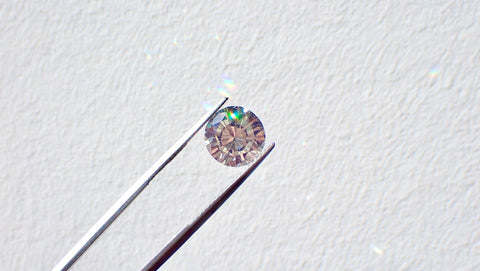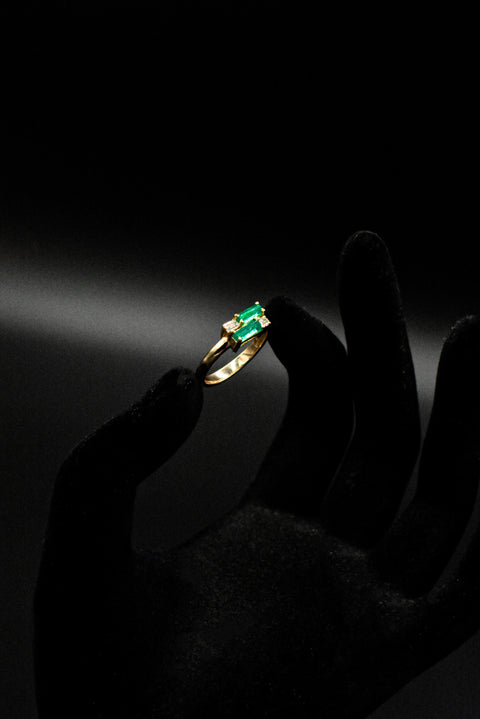When shopping for a diamond—whether for an engagement ring or a timeless piece of fine jewelry—it’s essential to understand the Four C’s: Cut, Clarity, Carat, and Colour. This universal grading system, established by the Gemological Institute of America (GIA) and recognized by leading institutions like the IGI (International Gemological Institute), serves as the global standard for evaluating diamond quality. These four factors not only determine a diamond’s brilliance and overall beauty but also influence its value. Here’s everything you need to know to make an informed decision.
Clarity: The Diamond’s Fingerprint
Diamonds form under extreme heat and pressure, which often results in tiny internal features called inclusions. These natural characteristics impact clarity and are graded on a scale from Flawless (FL) to Included (I).
- Flawless (FL) & Internally Flawless (IF): Extremely rare with no visible inclusions under 10x magnification.
- Very Very Slightly Included (VVS1 & VVS2): Minuscule inclusions, difficult to detect even under 10x magnification.
- Very Slightly Included (VS1 & VS2): Small inclusions, often invisible to the naked eye.
- Slightly Included (SI1 & SI2): Noticeable inclusions under 10x magnification, some visible to the naked eye.
- Included (I1, I2, I3): Obvious inclusions affecting transparency and brilliance.
Tip: If you're on a budget, diamonds in the VS or SI range offer great value—clear to the naked eye but more affordable than Flawless stones. Also, don’t judge a book by its title. Placement matters when it comes to inclusions. A diamond with an SI1 rating might have an inclusion placed on the side that can be covered by the prongs therefore making it a perfect option at a lesser cost.
Colour: Less is more…literally
Diamonds are graded on a D-to-Z scale, with D (completely colourless) being the rarest and most valuable, while Z (light yellow or brown) is less sought after and holds a lower value. The less colour a diamond has, the rarer and more valuable it is.
- D-F (Colourless): Premium quality with no visible colour.
- G-J (Near Colourless): Slight warmth, great value for budget-conscious buyers.
- K-M (Faint Yellow): Noticeable colour, often complemented by vintage-style settings.
- N-Z (Light Yellow/Brown): More visible colour
Tip: If you’re setting your diamond in yellow or rose gold, a slightly warmer tone (G-J) can still appear bright and white, offering more value. You can also set your diamond in white gold or platinum to give it an even brighter appearance.
Cut: The Sparkle Factor
A diamond’s cut determines how well it reflects light, affecting its brilliance, fire, and sparkle. Unlike the other 3Cs, cut is the only factor influenced by craftsmanship rather than nature.
- Excellent: Maximum sparkle and fire.
- Very Good: High brilliance, slightly less than Excellent.
- Good: Still sparkly, but with minor light leakage.
- Fair & Poor: Noticeable dullness due to improper proportions.
Tip: Always prioritize cut over other factors! A well-cut diamond can appear larger and more brilliant than a poorly cut stone of the same carat weight.
Carat Weight: Weight vs Measurements
Carat weight measures the diamond’s physical weight, not its size. While bigger diamonds are rarer and more expensive, cut quality significantly affects how large a diamond appears.
- Diamond size varies by shape—for example, an oval or marquise cut can appear larger than a round diamond of the same weight.
- Each shape has a standard set of proportions or measurements. Some stones may have slightly larger dimensions, making them appear bigger than their actual carat weight. Looking for diamonds with optimal measurements can help maximize visual size without compromising cut quality.
Tip: Don’t just look at carat weight when making your decision on whether a stone is big enough for you or your partner. Sometimes a 0.90 ct can have the same measurements as a 1.00 ct but cost significantly less. Our experts can help guide you through these little details to help you maximize your budget within a safe range for the shape of diamond you are considering.
Choosing the Right Balance
The perfect diamond isn’t necessarily the one with the highest grades across all 4Cs—it’s the one that aligns with your budget, preferences, and style.
A few expert recommendations:
✔️ Prioritize cut quality—it has the biggest impact on sparkle.
✔️ Go for near-colourless (G-J) diamonds to balance beauty and value.
✔️ Choose VS1-SI1 clarity to get a clean-looking diamond at a lower price.
✔️ Consider elongated shapes like oval, marquise, pear, or emerald cuts for unique looks and a larger appearance.
Looking for expert guidance? Our team at The Gem Concierge is here to help you find the perfect diamond tailored to your vision and budget. Book a consultation today!


